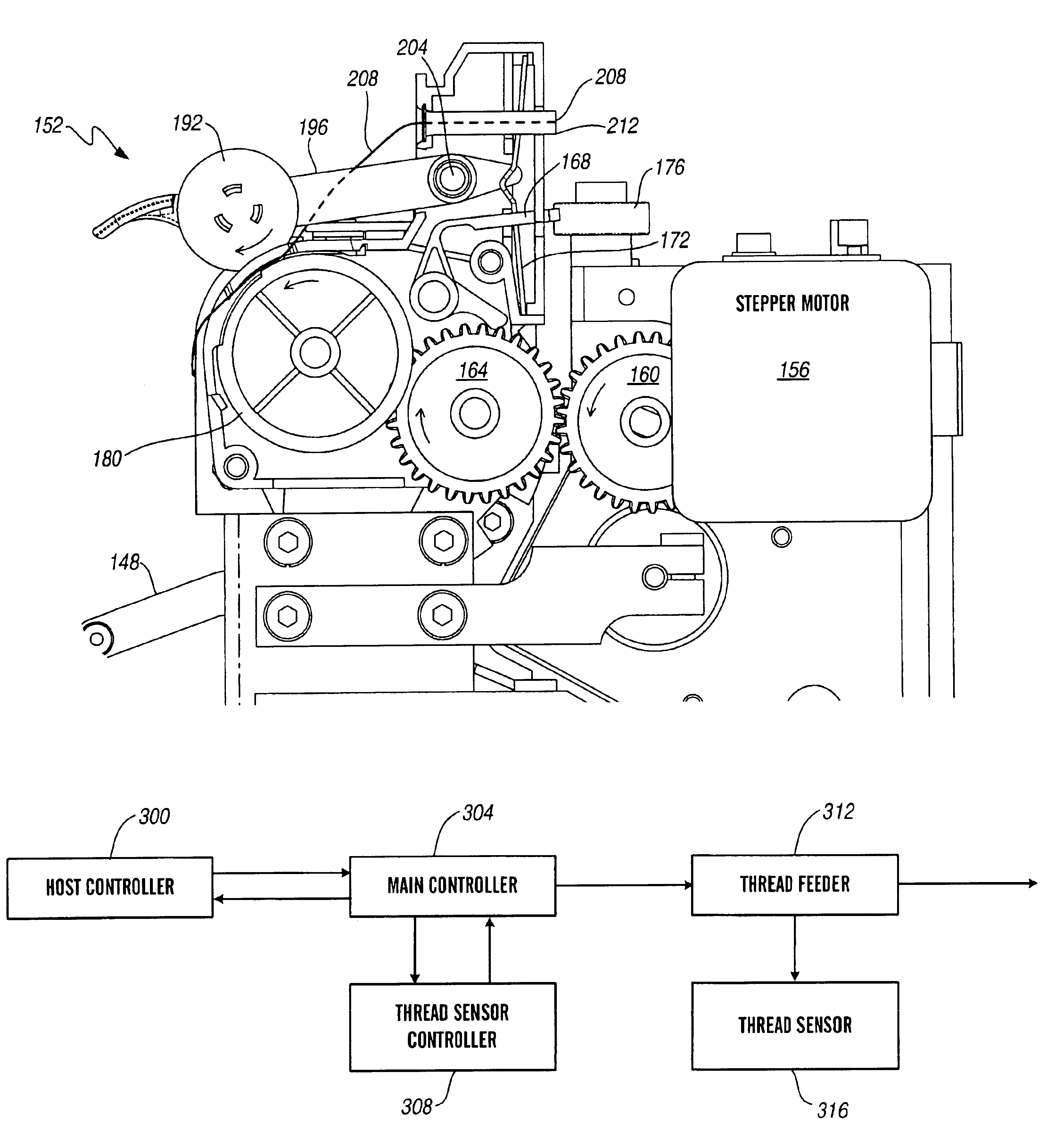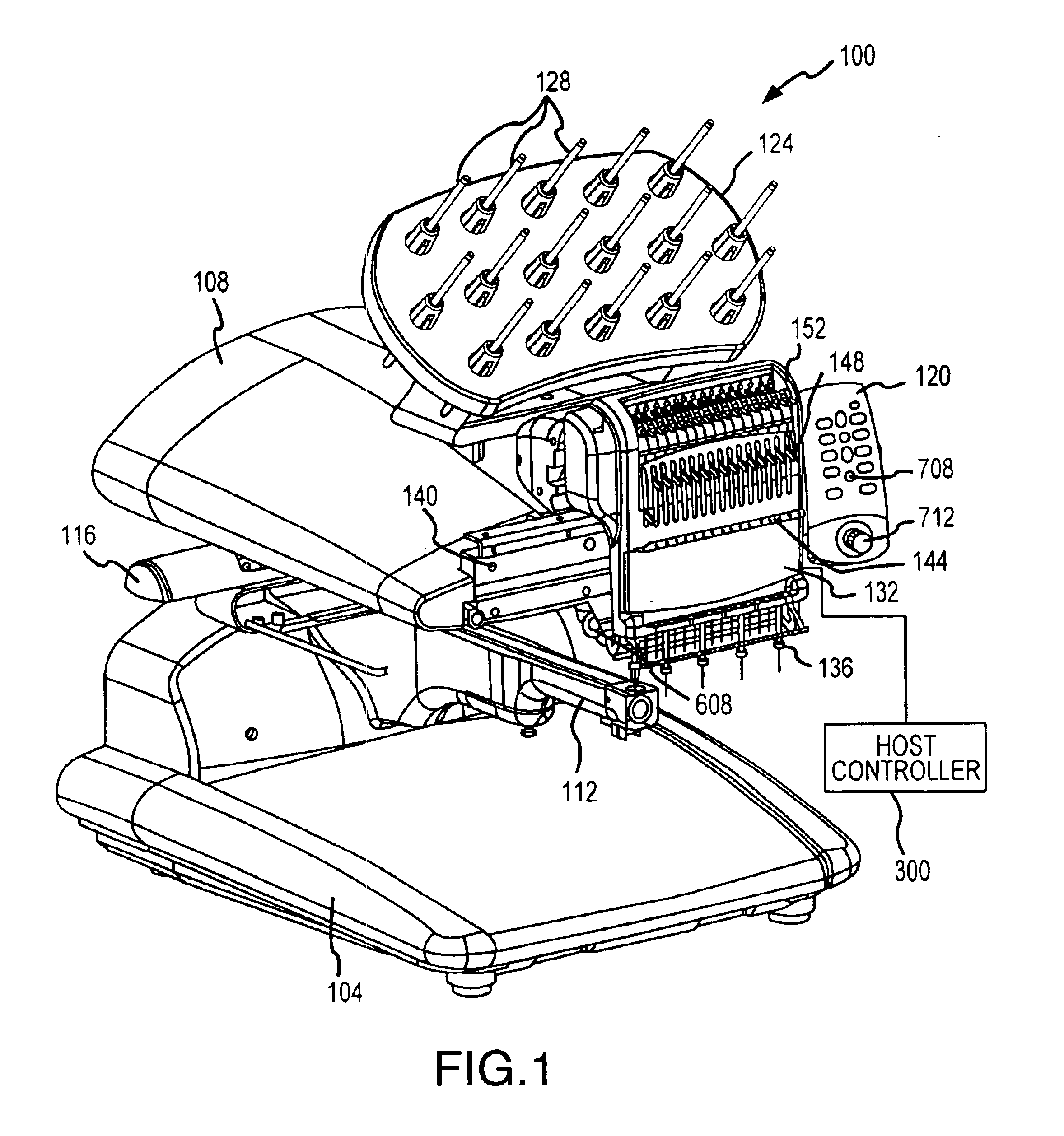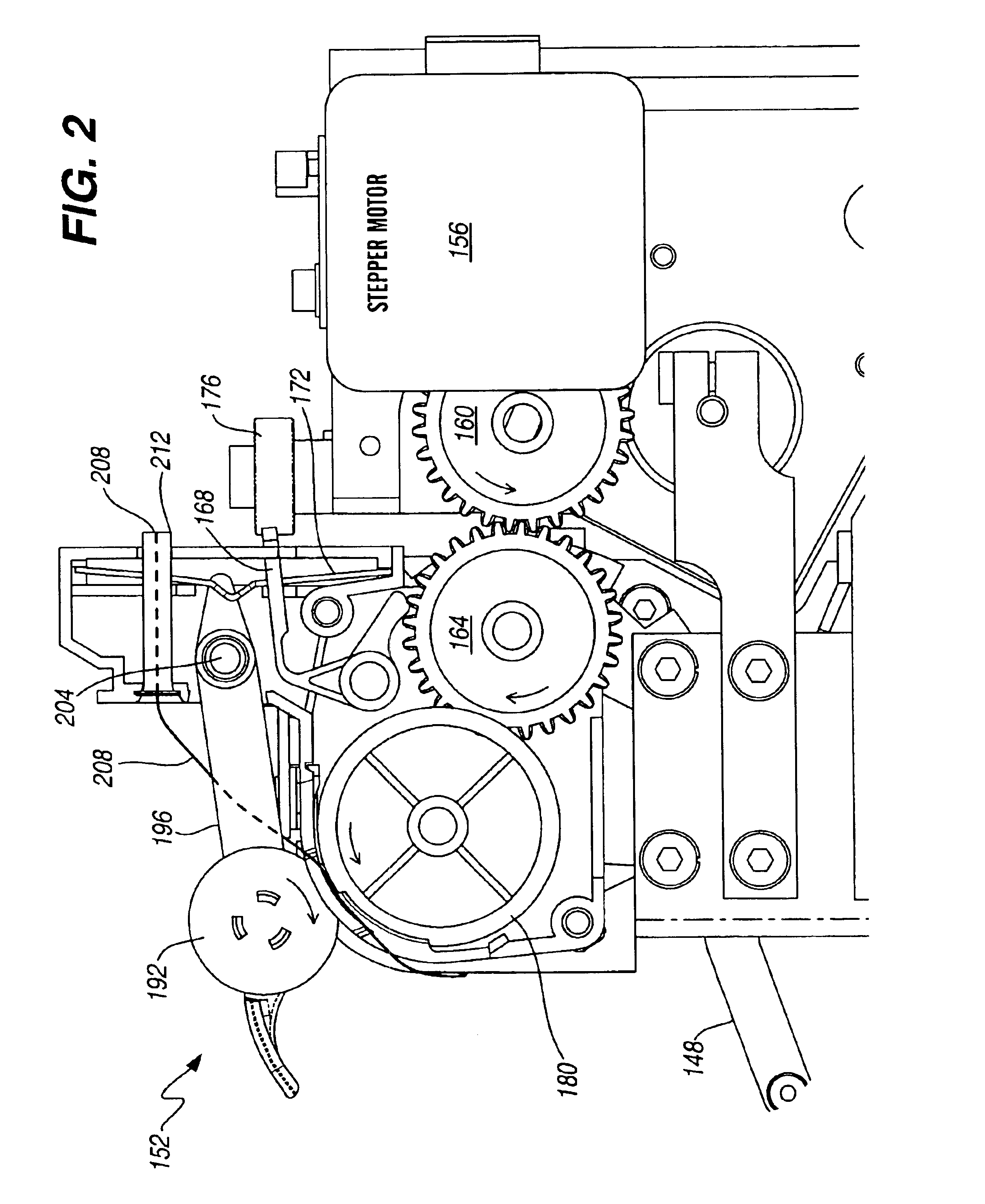Computerized stitching including embroidering
a technology of embroidering and computerized stitching, which is applied in the field of stitching machines, can solve the problems of increasing the amount of backing material required, increasing the cost of backing material, and creating more tension than is required in typical systems, so as to reduce the need for backing material, reduce the need for thread breaks, and reduce the effect of thread tension
- Summary
- Abstract
- Description
- Claims
- Application Information
AI Technical Summary
Benefits of technology
Problems solved by technology
Method used
Image
Examples
Embodiment Construction
Referring to FIG. 1, a front perspective representation of one embodiment of the invention is now described. The embroidery machine 100 has a base assembly 104, an upper arm assembly 108 mounted to the base assembly 104, a lower arm assembly 112 mounted to the base assembly 104, and an X-Y drive assembly 116 mounted to the base assembly 104. Within the base assembly 104 is a main controller (not shown), which receives patterns to be stitched into a garment from a host controller 300, receives manual commands from a user interface 120, and controls stitching operations. The host controller 300 is a computer which allows a user to input, select, and download design patterns to the main controller. The host controller 300 may be any suitable computer for a user interface, including a Windows based PC, an Apple Macintosh type computer, a UNIX based computer, or any other similar computer capable of providing a user interface and input, selection, and download capabilities.
Mounted to the...
PUM
 Login to View More
Login to View More Abstract
Description
Claims
Application Information
 Login to View More
Login to View More - R&D
- Intellectual Property
- Life Sciences
- Materials
- Tech Scout
- Unparalleled Data Quality
- Higher Quality Content
- 60% Fewer Hallucinations
Browse by: Latest US Patents, China's latest patents, Technical Efficacy Thesaurus, Application Domain, Technology Topic, Popular Technical Reports.
© 2025 PatSnap. All rights reserved.Legal|Privacy policy|Modern Slavery Act Transparency Statement|Sitemap|About US| Contact US: help@patsnap.com



